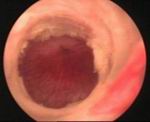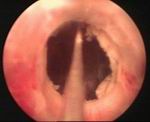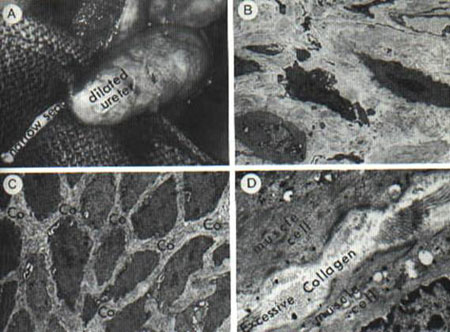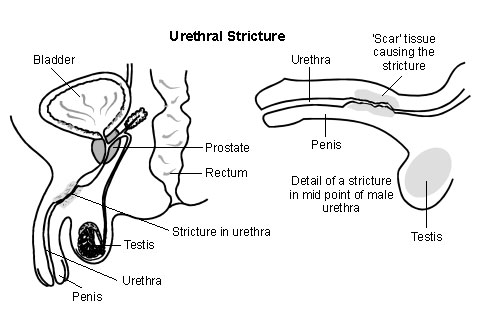Stricture Urethra
Soft stricture can be treated by endoscopic urethrotomy & recurrent stricture can be treated better by substitution, end to end or staged urethroplasty.
We have good experience for Stricture Surgery - Urethroplasty.






A urethral stricture is a narrowing of a section of the urethra. It causes a blocked or reduced flow of urine which can lead to complications. There are various treatment options which aim to widen the narrowed section of the urethra.
Understanding the Urethra
The urethra is the tube that urine flows out of from the bladder. It passes through the penis in men. The urethra is much shorter in women and ends just above the vagina. (In men, semen is also ejaculated through the urethra.)
What is a urethral stricture?

A stricture occurs when a part of the urethra becomes narrowed. Any section of the urethra may be affected. There is usually some scar tissue around the affected part of the urethra that causes the narrowing. The length of strictures vary from less than 1 cm to the full length of the urethra. The diagram below illustrates a fairly long and severe stricture, but many are shorter than this. Urethral stricture is uncommon in men and rare in women.
What causes a Urethral Stricture?
- Injury or damage: to the urethra can heal with scar tissue that may cause a stricture. There are various types of injury that can damage the urethra. For example: an injury may occur during medical procedures to look into the bladder via the urethra; radiotherapy treatment may damage the urethra; a fall astride on to the frame of a bike can cause damage.
- Infection of the urethra is another cause; for example:
1) Sexually transmitted infections such as gonorrhoea or chlamydia.
2) Infection as a complication of long-term use of a catheter to drain the bladder.
3) Infection may cause inflammation in the tissues in and around the urethra. - These infections usually clear with treatment but may leave some scar tissue at the site of the inflammation, which can cause a stricture. Note: most urethral infections do not cause a stricture. A stricture is just one possible complication from a urethral infection.
- Congenital - some babies are born with a urethral stricture.
- Cancer - very rarely, a cancer of the urethra can be the cause of a stricture.
What are the symptoms of a Urethral Stricture?
There may not be any symptoms initially. However, the following symptoms - which are likely to worsen with time - may occur :
- Reduced urine flow is the usual first symptom. Straining to pass urine is common but a complete blockage of urine flow is rare.
- Spraying of urine or a double stream may occur.
- Dribbling of urine for a while after going to the toilet to pass urine.
- Frequency sometimes occurs (needing to pass urine more often than normal).
- You may have a reduced force of ejaculation.
- Sometimes, mild pain on passing urine.
What are the possible complications?
More pressure is needed from the bladder muscle to pass urine out through a stricture (it acts like a bottleneck). Not all urine in the bladder may be passed when you go to the toilet. Some urine may pool in the bladder. This residual pool of urine is more likely to become infected. This makes you more prone to bladder, prostate and kidney infections. An abscess (ball of infection) above the stricture may also develop. This can cause further damage to the urethra and tissues below the bladder. Cancer of the urethra is a rare complication of a long-standing stricture.
- Tests to determine the flow rate of urine are usually advised if a urethral stricture is suspected. This involves passing urine and measuring how much is passed per second. The flow rate is much reduced if you have a stricture.
- A look into the urethra by a special thin telescope will be needed to assess the stricture.
- Special X-rays may be taken whilst you pass urine, which can show the site and severity of a stricture.
What is the treatment for Urethral Stricture?
Treatment is usually advised to improve the flow rate of urine, ease symptoms and to prevent possible complications. A specialist surgeon called a urologist advises on treatment. (A urologist treats problems of the urinary tract - such as prostate, bladder, kidney and penis problems.) Treatment options include the following. The one advised by your specialist will depend on factors such as the site and length of your stricture, and also your age and general well-being.
Dilatation (widening) of the Stricture
This is usually done by passing a thin plastic rod (boogie) into the urethra. This procedure may be done either under a local or a general anaesthetic. Rods of increasing thickness are gently inserted to gradually widen (dilate) the narrowed stricture. The aim is to stretch and widen the stricture without causing additional scarring. However, a stricture often tends gradually to narrow again after each dilation. Therefore, a repeat dilation is commonly needed every so often when symptoms recur. (Some people are given a self-lubricating catheter which they insert themselves regularly to keep a stricture dilated.)
As a rule, the shorter the stricture, the greater the chance of a cure with dilation. It is a relatively easy procedure to do and so may be tried first.
Urethrotomy
In this procedure, a thin telescope is passed into the urethra to see exactly where the stricture is. This is done during a general anaesthetic. A tiny knife is then passed down the telescope to cut along the stricture. This widens the narrowed stricture. You will get some relief of symptoms from this procedure. About one case in three is cured for good. However, like dilation, the stricture may re-form and the procedure may have to be repeated from time to time in some cases.
Surgery
A corrective operation may be an option if the above do not work. Various techniques are used. For example, a short stricture can be cut out and the two ends of the healthy urethra stitched together.
If the stricture is longer, then one kind of operation is similar to skin grafting the inside lining of the urethra. A graft is usually used from the inside of your cheek to form the new section of your urethra. Techniques continue to improve and your specialist will advise if an operation is likely to be successful, and which operation is best for the length and site of your stricture. As a rule, there is a high success rate in curing symptoms with these operations.
Stenting
People who are unfit for surgery, due to age or other infirmity, may be offered a stent. This is a spring-like device which holds the walls of the urethra open and prevents the stricture from blocking the flow of urine. It is used as a last resort, as the device sometimes dislodges and can cause pain during intercourse.
Antibiotics
A long course of antibiotics may be advised to prevent urine infections until a stricture has been widened.